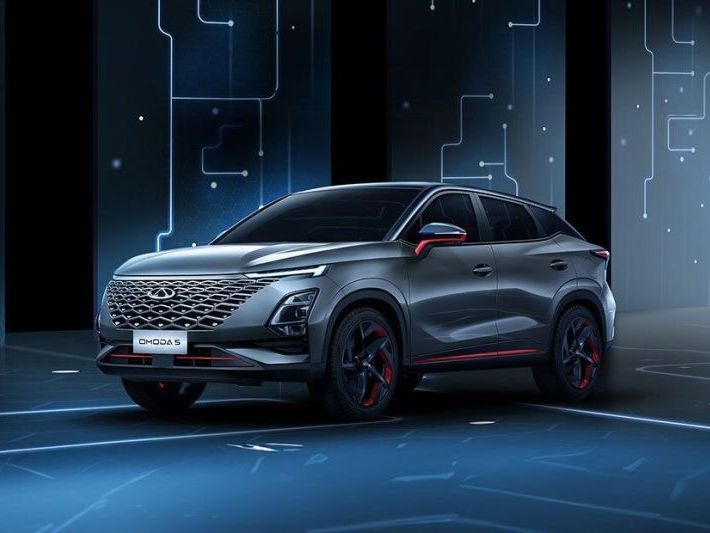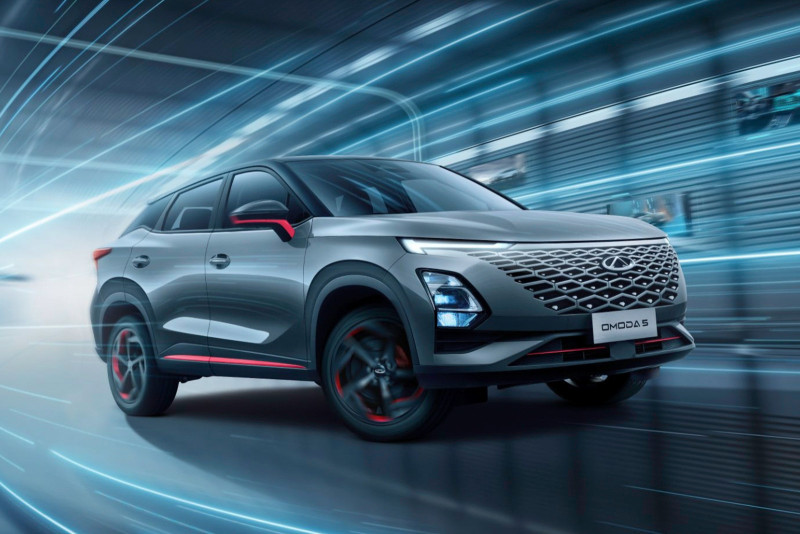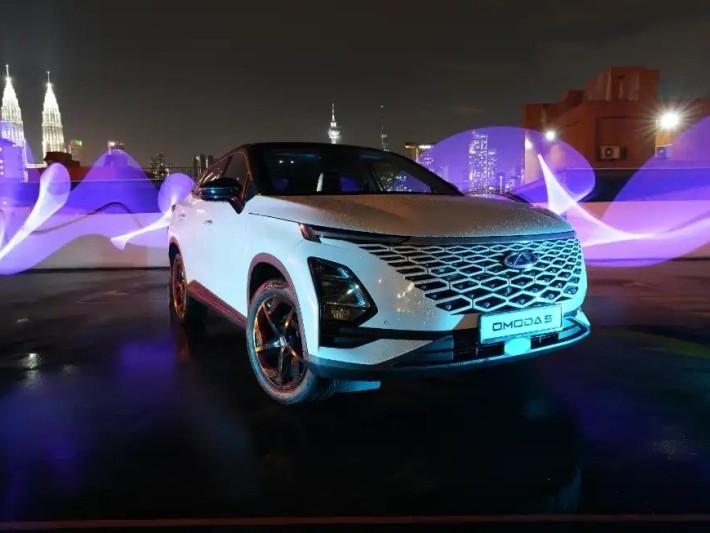Q
Is Chery Omoda 5 an electric car?
The Chery Omoda 5 isn't an all-electric ride; it's a gas-powered SUV packing a 1.5-liter turbocharged petrol engine paired with a CVT gearbox, squarely targeting young buyers in the Malaysian market. That said, Chery Malaysia has plans to roll out an electric version down the line to cater to the growing demand for new energy vehicles. Right now, the Omoda 5 is turning heads with its sleek looks, generous kit, and wallet-friendly price tag – think dual 10.25-inch screens and ADAS driver assistance tech, just to name a few highlights. For Malaysian folks eyeing an EV, you might want to check out other pure electric models already on the market, or hold off for Chery's potential electric Omoda offerings in the future. The Malaysian government is pushing hard for EV adoption, with tax incentives and charging infrastructure in the works, so we'll be seeing more new energy options pop up. At the end of the day, consumers should weigh up the pros and cons of gas vs. electric based on their budget and needs.
Special Disclaimer: This content is published by users and does not represent the views or position of PCauto.
Related Q&A
Q
What Segment is Chery Omoda 5?
The Chery Omoda 5 is classified as a B-Segment SUV in the Malaysian market, belonging to the same class as models like the Honda HR-V and Toyota Corolla Cross, targeting young consumers and urban family users. This vehicle has attracted attention with its trendy and forward-looking exterior design, rich technological features, and high cost-performance ratio. The body dimensions are approximately 4,400mm x 1,830mm x 1,588mm, with a wheelbase of 2,630mm, offering decent seating space and practicality.
In terms of power, the Malaysian version is equipped with a 1.5L turbocharged engine paired with a CVT transmission, balancing power performance and fuel economy. It's worth noting that B-Segment SUVs are very popular in Malaysia. This is because such models usually have a relatively high ground clearance, which is suitable for local road conditions, and their moderate body size makes them easy to navigate in the city.
The Omoda 5 is also equipped with advanced driving assistance systems, such as adaptive cruise control and lane-keeping assist. These features were previously more common in higher-class models, demonstrating Chery's sincerity in technology dissemination.
For Malaysian consumers, when choosing a B-Segment SUV, besides considering the brand and price, they should also pay attention to after-sales service and warranty policies. These factors are equally important in the long-term vehicle use process.
Q
What is the Reslae Value of Chery Omoda 5?
As a relatively new SUV model, the Chery Omoda 5 currently has a mid - level second - hand resale value in the Malaysian market. Its specific performance depends on factors such as the vehicle's condition, mileage, maintenance records, and market demand. Since the model only entered the Malaysian market in 2022, the accumulation of second - hand data is limited. However, thanks to its stylish design, rich configurations, and the gradually increasing recognition of the Chery brand, its resale value is expected to be close to that of Japanese and Korean models in the same class, but slightly lower than that of models from mainstream brands like Toyota or Honda in the same segment.
The key factors affecting the resale value include regular maintenance, the integrity of the original factory warranty (Chery offers a 7 - year or 150,000 - kilometer warranty), and the market's acceptance of the new energy version (if a hybrid version is launched in the future). It is recommended that car owners keep complete service records and avoid excessive modifications to maximize the residual value. When evaluating the price of a used car, Malaysian consumers can refer to the real - time data on local used - car platforms such as Carlist or mytukar. Meanwhile, note that the long - term demand for SUV models in Malaysia is relatively stable, which helps the Omoda 5 maintain a certain second - hand market. If you plan to change your car in the short term, choosing a high - end version or the factory - certified used - car program may be more cost - effective.
Q
How Many CC is Chery Omoda 5?
The Chery Omoda 5 available in the Malaysian market is equipped with a 1.5L turbocharged (Turbo) four - cylinder engine with an actual displacement of 1498cc, which meets the current mainstream engine specifications for compact SUVs. This engine can produce 156 horsepower and 230 Nm of torque. Paired with a CVT transmission, it offers smooth power delivery and good fuel economy, which is particularly suitable for driving in the Malaysian urban areas and long - distance highway cruising.
In addition to this traditional fuel - powered engine, the Omoda 5 also comes in 1.6L Turbo or electric versions in some markets around the world. However, in Malaysia, the 1.5L Turbo version is currently the mainstream. Among its local SUV competitors in the same class, such as the Proton X50 (1.5TGDi or 1.5T), Honda HR - V (1.5L NA), and Toyota Corolla Cross (1.8L NA), the Omoda 5 has an advantage in torque output at low and medium speeds, making it a great choice for drivers who prefer a livelier acceleration experience. If Chery Malaysia introduces higher - performance or electric versions in the future, it may further enhance its market competitiveness.
Q
What is the Engine in Chery Omoda 5?
The Chery Omoda 5 in the Malaysian market is equipped with a 1.5-liter turbocharged four-cylinder gasoline engine with an actual displacement of 1498cc. It has a maximum power of 156 horsepower and a peak torque of 230 Nm. It uses a CVT continuously variable transmission, offering smooth power performance and excellent fuel economy, which is very suitable for the daily driving environment in Malaysia. Compared with naturally aspirated engines, this engine can provide stronger torque output in the low and medium speed ranges, making the acceleration during city driving more brisk and giving you more confidence when overtaking or climbing slopes. It's worth mentioning that the Omoda 5 also offers 1.6T turbocharged and electric versions in other global markets. However, the 1.5T model introduced in Malaysia at present can well meet the needs of most consumers. Compared with its peers in the same class such as the Proton X50 and Honda HR-V, this engine shows a good balance in terms of power performance and fuel economy.
Q
What is the Gearbox Type of Chery Omoda 5?
The Chery Omoda 5 is equipped with a CVT (Continuously Variable Transmission) in the Malaysian market. The specific configuration depends on the vehicle model version and power options. CVT transmissions are well - known for their smooth gear - shifting experience and fuel efficiency, making them ideal for daily city driving. For Malaysian consumers, the CVT is perfect for a comfortable commute in congested traffic. It's important to note that regular maintenance of the transmission fluid and following the manufacturer's recommended maintenance schedule are crucial for extending the lifespan of the transmission. No matter which option is chosen, it can provide a reliable driving experience for Omoda 5 owners.
Q
What is the PCD Size of Chery Omoda 5?
The PCD (Pitch Circle Diameter) of the Chery Omoda 5 is 5x114.3 mm. This is a common wheel hub bolt hole pitch specification used by many mainstream models in the Malaysian market and is suitable for 17- or 18-inch wheels. PCD is an important parameter for wheel installation, which determines whether the wheel can perfectly match the vehicle's axle head. Choosing the wrong PCD may result in the wheel not being installable or pose safety hazards during driving.
In addition to PCD, when replacing wheels, you also need to pay attention to the center bore diameter (CB) and offset (ET value). It is recommended that car owners confirm the data through the original factory manual or consult a professional modification shop to ensure compatibility. If you upgrade the wheel size, you also need to adjust the tire aspect ratio synchronously to keep the speedometer accurate, and comply with the legal regulations of Malaysia's JPJ regarding wheel modifications. For example, the change in the outer diameter of the wheels should not exceed 3% of the original factory specifications.
Q
Does Chery Omoda 5 Have Apple Carplay?
It's true that the Chery Omoda 5 supports Apple CarPlay. This allows Malaysian car owners with iPhones to easily connect their phones to the in - car system and enjoy convenient services like navigation, music, and calls. The Omoda 5 is equipped with a 10.25 - inch central control touchscreen and comes with an intelligent connectivity system. Besides Apple CarPlay, it also supports Android Auto, meeting the needs of different mobile phone users. This feature is very practical in the Malaysian market, especially for young drivers who rely on their phones for navigation and entertainment, greatly enhancing the driving experience.
In addition, the Omoda 5 also offers other advanced technological configurations such as a 360 - degree panoramic view camera, wireless charging, and voice control, further enhancing the vehicle's competitiveness. As an international brand, Chery has been very active in the Malaysian market in recent years. The Omoda 5 has attracted many consumers with its stylish design, rich configurations, and affordable price.
If you're considering buying a compact SUV, the technological configurations and practicality of the Omoda 5 are worthy of attention. In particular, the addition of Apple CarPlay makes it even more appealing among vehicles in the same class.
Q
What is the Tyre Brand of Chery Omoda 5?
In the Malaysian market, the tire brands that come as original equipment on the Chery Omoda 5 may vary depending on the vehicle's configuration or the market strategy. Common tire brands include well - known international ones such as Continental, Bridgestone, or Goodyear. The actual configuration should be based on what the local dealers provide.
As the only part of the vehicle that touches the road surface, the quality of tires directly affects the handling, comfort, and safety of the vehicle. It is recommended that car owners regularly check the tire pressure and wear. When replacement is needed, it is advisable to give priority to the specifications recommended by the original manufacturer. Moreover, as it rains a lot in the tropical climate of Malaysia, choosing tires with excellent wet - surface performance (such as those with an AA - grade grip rating) can enhance driving safety.
Different tire brands have their own focuses on noise reduction, wear resistance, and fuel efficiency. For example, the comfort - oriented Michelin Primacy series or the sporty Pirelli P Zero. Car owners can upgrade their tires according to their driving habits and budgets. However, they need to ensure that the brands and patterns of the tires on the same axle are consistent after replacement to guarantee stability.
Q
Is Chery Omoda 5 a Good Car? Learn the Pros and Cons Here
As an SUV targeting the young market, the Chery Omoda 5 has performed well in the Malaysian market. Its stylish appearance and rich configuration are the main selling points. It is equipped with a 1.5L turbo - charged engine, offering a smooth power performance. The fuel economy also meets the needs of families. The interior design is full of a sense of technology, with a standard dual - screen setup and intelligent connectivity features. The space performance is just okay, which is suitable for small families. In terms of safety configuration, it provides 6 airbags and an ADAS system, reaching the mainstream level in its class. However, the suspension tuning is a bit too stiff, resulting in average rear - seat ride comfort, and there is room for improvement in the sound insulation. The after - sales service network is being gradually improved. Overall, this car offers good value for money and is suitable for young consumers with limited budgets who pursue fashion. In Malaysia's hot climate, it is recommended to regularly check the cooling system and rubber parts to extend the vehicle's lifespan. Among the models in the same class, you can also consider the Honda HR - V or Proton X50. It is advisable to take a test drive and then make a choice based on your individual needs.
Q
What is the Width of Chery Omoda 5?
The body width of the Chery Omoda 5 is 1,830 millimeters. This dimension represents a relatively wide design among SUVs in its class, offering passengers more generous lateral space and enhancing the comfort of the ride. Malaysian drivers should exercise a bit more caution when navigating urban areas. When driving on narrow roads or parking, it's advisable to utilize reverse cameras and other assistive technologies to ensure safety.
The vehicle's width not only affects the interior space but also contributes to its stability. A wider wheelbase enhances traction when cornering, making it well - suited for Malaysia's winding mountain roads or high - speed driving scenarios. Moreover, the Omoda 5's broad body design aligns with the contemporary trend of SUVs, and when paired with its sporty exterior, it exudes a more imposing presence.
If you're considering purchasing the Omoda 5, we recommend a hands - on exploration of the interior space and a test drive to assess whether its handling performance meets your requirements.
Popular Cars
Model Year
Car Compare
Car Photo
Latest Q&A
Q
How much is 1 horsepower?
Horsepower (hp) is a unit of power that measures how much work a horse can do in one second—specifically, lifting 550 pounds one foot off the ground. In metric terms, that’s roughly 745.7 watts. The term was coined by engineer James Watt to compare steam engines to the workhorses they were replacing.
In cars, horsepower tells you how strong an engine is, but it’s not the whole story. Torque, weight, and drivetrain efficiency all shape how a car actually feels on the road. Also worth noting: there are slight variations in how horsepower is measured. For example, metric horsepower (PS) is about 0.986 hp, though the difference is negligible in everyday talk.
When shopping for a car, don’t just fixate on horsepower. Think about how you’ll use it. A small turbocharged engine might deliver better low-end torque for stop-and-go traffic, while a high-horsepower engine could be overkill for city driving. And if you’re looking at EVs, remember their power is often listed in kilowatts (kW)—where 1 kW equals about 1.34 hp. Knowing these conversions helps compare different powertrains more accurately.
Q
How to calculate main engine power?
The calculation of main engine power is usually based on the physical relationship between torque and RPM, with the formula being * * power (kW)=torque (Nm) x RPM ÷ 9549 * *, or * * horsepower (HP) in English units=torque (lb ft) x RPM ÷ 5252 * *. In actual measurement, manufacturers will collect data and draw power speed curves under specific operating conditions through engine bench testing, while commonly used calibration values by consumers (such as maximum power) are mostly theoretical peak values. It should be noted that the power on the wheels (the actual power transmitted to the wheels) may be lower than the engine output value due to factors such as transmission efficiency and transmission losses. This is also why modification enthusiasts often verify actual performance through chassis dynamometers. In addition, technologies such as turbocharging and variable valve timing can optimize combustion efficiency and indirectly improve power performance, while electric vehicles directly output instantaneous maximum torque through motor characteristics, and the power calculation logic is different from traditional internal combustion engines. If you have doubts about the specific vehicle model data, you can refer to the official technical manual or professional evaluation report.
Q
What does a 1.6 litre engine mean?
A 1.6-liter engine means the total displacement of all cylinders is 1.6 liters—in other words, the combined volume swept by the pistons from top to bottom dead center is 1,600 cubic centimeters. Generally, a larger displacement means more power, but it also leads to higher fuel consumption. Engines of this size are very common in the local market because they strike a good balance between performance and fuel efficiency, making them ideal for daily commuting and family use.
Displacement is one of the key indicators of engine performance, but real-world performance also depends on other technologies, like turbocharging, fuel injection systems, and variable valve timing. These can make engines of the same displacement produce different power outputs and efficiency levels. For example, some 1.6L turbocharged engines can deliver power close to a naturally aspirated 2.0L engine while being more fuel-efficient.
When choosing an engine, it’s not just about displacement—you should also consider your driving habits and needs. If you frequently drive long distances or at high speeds, a bigger engine might be preferable, while a smaller turbocharged unit could be the smarter choice for city driving.
Q
Is a 1.6 L engine good?
The 1.6L engine strikes a good balance for everyday driving. It delivers enough power for city commutes and occasional highway trips while maintaining decent fuel efficiency. Maintenance costs are reasonable too—a practical choice for family cars.
Naturally aspirated 1.6L engines are particularly reliable, with mature tech that prioritizes durability and low upkeep. If you want extra punch, turbocharged 1.6L variants can match the performance of some 2.0L naturally aspirated engines without sacrificing much fuel economy.
That said, your driving habits matter. Frequent long-distance drivers might find 1.6L a bit underwhelming, but it’s more than adequate for urban errands. Keep in mind, performance varies across brands—always test-drive before deciding.
Q
Is a 1.5 litre engine good?
Whether a 1.5L engine is right for you depends on your driving needs. For city commuting and daily errands, this displacement performs exceptionally well—it’s fuel-efficient, cheaper to maintain, and ideal for stop-and-go traffic. Plus, many modern 1.5L turbocharged engines now deliver power close to traditional 2.0L naturally aspirated ones, easily handling most family trips. If you’re mainly driving in urban areas with occasional highway runs, a 1.5L is plenty. But if you frequently haul heavy loads uphill or crave sharper throttle response, you might want to consider a larger engine. Keep in mind, though: advancements like optimized intake/exhaust systems and direct injection have given smaller turbo engines decent low-end torque, which is a big help in crawling traffic. So beyond displacement, pay attention to how the engine is tuned and what tech’s under the hood.
View MoreRelated News

Chery Omoda 5 Interior Design Unveiled: A Tech Cockpit for the Young Generation
MichaelJul 9, 2025

Hot Pick: Chery Omoda 5 - Stylish Design & Affordable Price
MichaelApr 17, 2025

Chery breaks ground for its smart factory in Malaysia, initial annual production capacity of 100,000 vehicles
MichaelFeb 26, 2025

Is Chery Omoda 5 suitable for family users? Deep analysis of its advantages and disadvantages!
RobertOct 18, 2024

The popularity of Chery Omoda 5 is surging dramatically, a perfect fusion of intelligent technology and comprehensive experience!
AshleySep 11, 2024
View More












 Cars
Cars




Pros
Cons